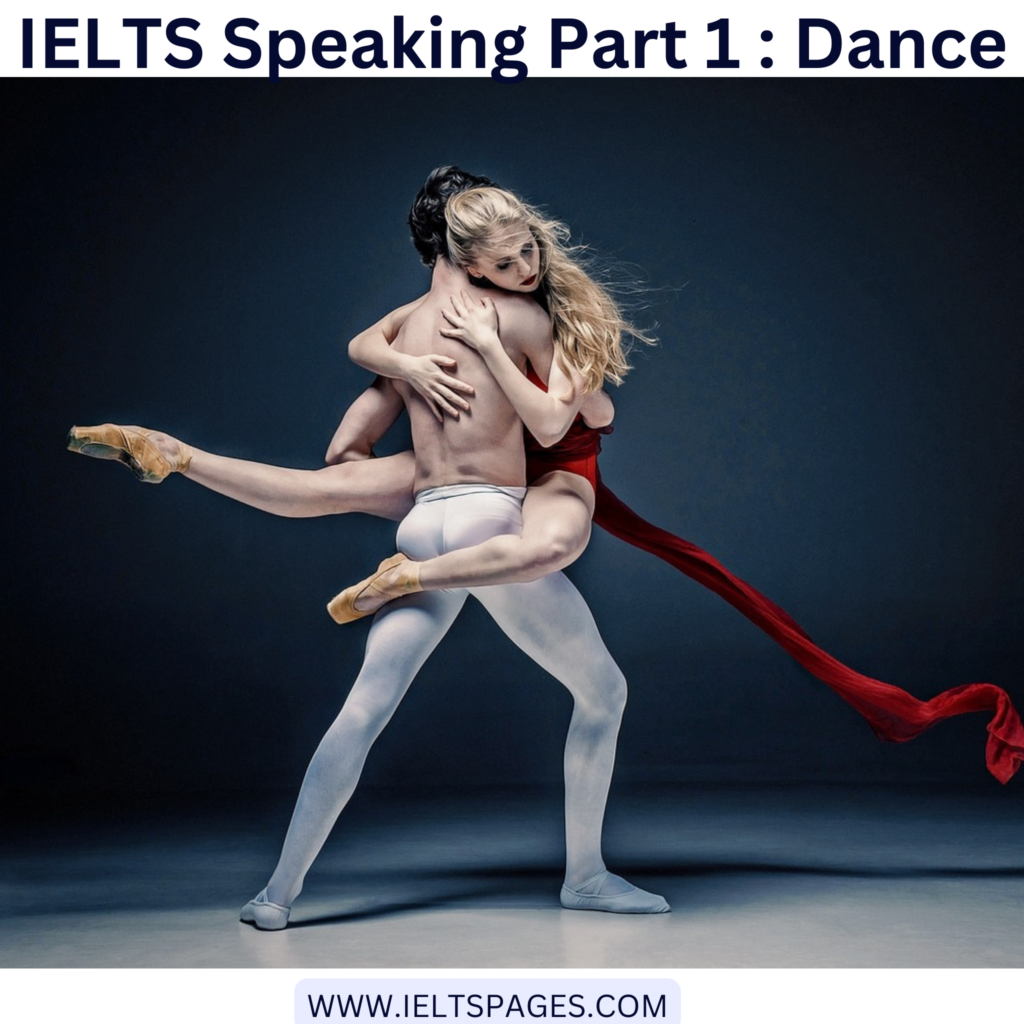
IELTS Speaking Part 1: Dance
When did you last go to a place where people dance in your country?
Last time I went to a place. It is a theatre setting. And I went there a month back. And I enjoyed the place with my family.
When was the last occasion when you danced a lot?
The last occasion was at a birthday party when we all were invited. And we danced for the night.
Do you like dancing?
Yes, I generally enjoy dancing because dancing is a form of enjoyment. And I’m not a professional dancer. But I like to dance with my people, family, and friends.
Did you learn to dance?
Yes, I learned to dance a folk dance, bhangra, a folk dance for Punjab in India. I knew that in my school during an annual function.
How would you describe the role of dance in different cultures around the world?
If we talk about different cultures worldwide, dance or art forms like music and dance are essential to their culture. In previous times, dance was used to portray the emotion and expression of a story.
Dance can also portray a very old or important poem or story written by any author. But these days, people are learning their dance and their authenticity, and it’s gaining importance.
Can you discuss the significance of dance as a form of expression and communication?
Dance is essential in many aspects of life because dance is a form of relaxation activity. And people often feel lively when they do that. Even by watching dance, people think they are close to their family and culture.
How has technology influenced the evolution of dance performances and choreography?
Technology has influenced dance performances. If I talk about new beginners, they can skip certain dance classes if there is some time issue or transformation. Nowadays, many videos are available over the internet and can be copied from them. People are learning it as a skill in life.
What are some of the most influential dance styles, and how have they impacted modern dance?
Some of India’s most influential dance styles are Kathak, Bharatanatyam, and Odissi. These dance forms are not only a source of entertainment; these dancers learn how to control and manage their steps along with their expressions.
And they portray a beautiful story behind every step they take. So, it is a great way to look at the culture by just looking at the dance.
How do dancers use body movement to convey emotions and tell stories?
To convey emotion and tell stories, dancers mostly set their pace according to the emotion. And facial expressions and gestures are essential. They make sure that they are very expressive through that.
What are the physical and mental benefits of regularly practicing dance?
So, dance form is a coordinated movement of the body parts, be it the mind, muscles, bones, or anything in the body. Everything is moving and moving very gracefully. That is a good practice for mental and physical activity.
Can you discuss the relationship between music and dance and how they complement each other in performances?
So, dance is done on specific beats and music. And music complements dance. So they go hand in hand.
Automatically, if a person is listening to exciting music, they tend to get their feet shaking and start dancing if they enjoy it. So music and dance are both essential aspects of everybody’s life, and people want them together.
How do choreographers approach the creative process of developing new dance routines?
Choreographers approach making their art form way more accessible by taking daily classes. And they are breaking all the complex steps into more straightforward forms.
They are putting in a lot of hard work and creating a fusion of two dance forms, classical and Bollywood, and they call it a semi-classical dance form. So, choreographers are creative.
What challenges do professional dancers face, and how do they overcome them?
So, in the era of technology, everybody prefers to watch movies and visit theatres in their free time. But very few people go to the theatres to watch the dance because it is not popular.
It is affecting the lives of people who take dance as their career, and they’re not doing anything else because even after putting in so much effort, they don’t gain as much popularity as they deserve. So they make less money than they should.
How does dance contribute to social and political movements, and how can it be used as activism?
So, in any social or political movement, dance can attract people, and already people are doing that. They invite people to a mass gathering on the occasion of some dance competition or something that is appealing to people, and with that, they tend to achieve their motive or their agenda.
